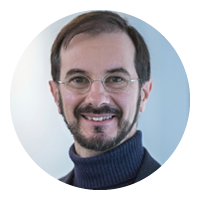Short description about presentation:
Despite the introduction of more and more stringent regulatory requirements in the European Union and in the rest of the World, the level of air pollution remains critical in many places, especially in the urban and industrial areas. The impacts of current legislations in different sectors (e.g. static emissions, transports, marine) has been significant, but there are still improvements expected, especially from the industrial sector.
The IED entered into force in November 2010 and covers some 50,000 installations across the European Union e.g. to produce chemicals, power, petrochemical products, cement, glass, car/metal and to treat/incinerate waste. Requirements under the IED are included in the Best Available Techniques Reference (BREF) documents, agreed within each specific industry sector. BREF documents define the Best Available Techniques (BAT) conclusions that are legally binding and they include also requirements in term of emissions monitoring. There are 32 BREF documents in total that should be revised under the IED by 2020, but currently only 14 BREF documents have been adopted.
As an example, the Large Combustion Plant (LCP) BREF will introduce in 2021 new emissions monitoring requirements – including emission limit values – e.g. for NH3, Hg, HCl, HF and TVOC as well as will tighten the existing requirements for SOx and NOx. The scope of the LCP BREF includes combustion installations with a total rated input exceeding 50 MW, gasification of coal or other fuels in installation with a thermal input ≥20MW (when this activity is directly associated to a combustion plant), waste co-incineration plants of hazardous and non-hazardous waste. The impact will be on more than 3,000 installations all over the EU, that would need to review effectiveness and compliance of their pollution reduction technology and emissions monitoring systems.
This paper will provide an overview of the current legislation framework, including some industry case studies and will look at the pure gases and gas mixtures, their packages and the gas supply systems, needed to ensure a reliable and accurate use of the emission measurement systems. This includes innovations in term of species to be monitored (e.g. HCl, HF, Hg), packages (e.g. use of VIPR in portable cylinders) and equipment (e.g. digital sensors). Moreover, aspects of technical compliance to applicable safety standards and metrological traceability requirements will also be covered.
